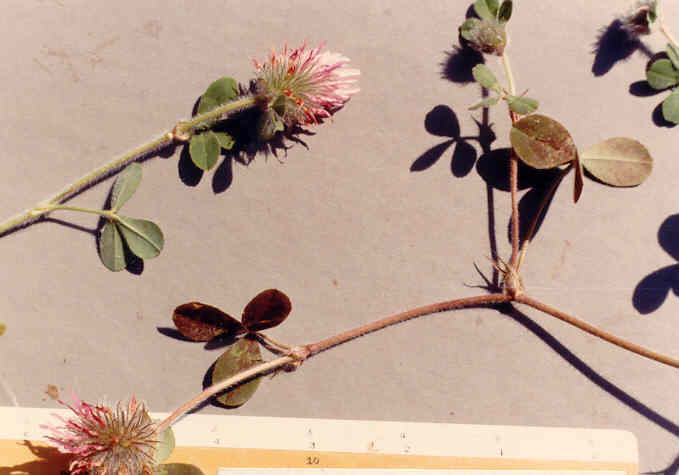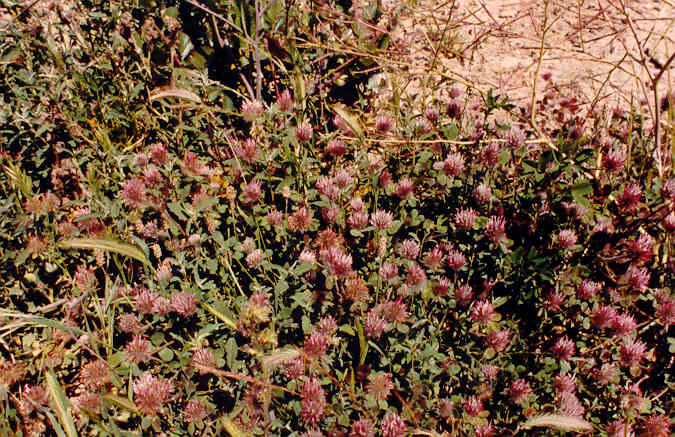
Trifolium hirtum All.
 |
Trifolium hirtum All.
Fabaceae (Pea Family)EurasiaBristled CloverRose Clover |
March Photo
Plant Characteristics:
Densely long-villous annual, 1-4 dm. high; lvs. palmately trifoliolate; stipules
narrow, with a long bristle-tip; lfts. narrowly cuneate-obovate, 0.8-2 cm. long;
heads globose, sessile, subtended by paired lvs. or their stipules, 1.5-2.5 cm.
in diam.; calyx 20-nerved, densely hirsute with ascending hairs, the setaceous
lobes 4-6 mm. long, exceeding the tube; corolla purple, slender, longer than the
calyx.
Habitat:
Goleta, Santa Ynez Mts., etc.; to cent. Calif.;
April-May.
Name:
Latin, tres, three and folium,
leaf. (Munz, Flora
So. Calif. 470). Latin, hirtum,
hairy. (Simpson 277).
General:
Found in several locations in the study area, all on the westerly side of
the bay. I suspect that some the
stands were introduced with an erosion control mix of seeds sprayed by the
Irvine Co. on newly graded areas. The
photographed specimens were near the Delhi Ditch.
(my comments).
All of the species can be eaten raw, but sparingly as they are hard to
digest and can cause bloat. However,
due to the high protein content they are quite nutritious and can be eaten in
quantity if cooked, or soaked for several hours in strong salt water.
(Kirk 100). The
medical profession gives little attention to the medicinal properties of clover,
yet the plant, for a long time, has been employed domestically as an
antispasmodic, as an expectorant and as an ointment for local application to
ulcers. (Coon 212). About
300 species, most abundant in Northern Temperate regions, but also in South
America and Africa. (Munz, Flora So. Calif. 470).
Naturalized in California. (Hickman,
Ed. 652).
Text Ref:
Hickman, Ed. 652; Munz, Flora So.
Calif. 473; Roberts 25.
Photo Ref:
Mar 4 85 # 17,18.
Identity: by John Johnson.
Computer Ref: Plant Data 107
Have plant specimen.
Last edit 1/21/03.
 |
March Photo